Heritage









Welcome to this special publication commemorating and celebrating the 90th anniversary of World Outreach.
It was on 31st March, 1932, that our founder, Dr Len Jones, registered the name, ‘Russian and Eastern European Mission’ (now World Outreach) in New Zealand.
Our theme this anniversary year (2022) is ‘Heritage’, which is honouring and celebrating the faithful, dedicated and sacrificial people who laid the foundation for what is being accom plished across 70 countries today.
In this booklet, we’ll look back at the birth of World Outreach, provide an updated profile on Len Jones, and look at a timeline contrasting major world events over the decades with the development of World Outreach. One of the reasons we’re doing this is to highlight that, despite significant global upheavals, the Lord continues to providentially work fulfilling his mission through his church by the Spirit’s power to bring people to himself.
Later in this publication, we’ll explore how World Outreach began in some of our key fields, such as: Thailand, Egypt, South Africa, Indonesia and India. In addition, we have some charts and graphs to help display some key places and events in World Outreach’s history, and to illustrate the growth of the mission. We also have three of the former International Direc tors providing congratulatory messages and reflections.
Looking back at our heritage shows us our navigation, but our vision gives us our destina tion
We honour the past, we embrace the present and we excitedly anticipate the future. In different words, we celebrate what God has done, we engage with what God is doing, and we prepare for all that God will do.
We enthusiastically invite you to read every word as we take you on a journey from our humble, faith-filled beginnings to be poised at one of the most pivotal moments in modern day missions.
We give glory to God for all he has done and live in expectancy for all he will do in the years ahead.
Bruce Hills International Director



Our founder, Len Jones, was born in Fremantle, Western Australia, on 10th August, 1900, the youngest son of a Welsh coalminer, John Jones, and his wife, Jane, who’d emigrated to Australia to work in the gold mines. Not much is known of his early life, but as a young adult Len worked as an Accountant in Melbourne.

In 1923 he was converted at a Methodist Church in South Melbourne. About a year later, in response to a call of God to ministry, Len attended the Melbourne Bible Institute and trained under prominent Anglican minister – Rev C.H. Nash.
Len preached regularly in Melbourne and Tasmania before ministering overseas in the USA, Can ada, Great Britain and New Zealand. On one of his trips to New Zealand, he met his future wife, Sheila Biggin.
However, Len had made plans to travel to Canada to complete his studies. Sheila followed
later and married Len in Winnipeg, Canada, in 1928. They ended up having four children: Bedford (11.07.1929), Phebe (17.08.1930), Seth (26.4.1932) and John (11.4.1936).

tion for REEM across Australia and NZ. REEMs post-communist focus was the displaced Slavs in nations where they had emigrated. In March 1952, it changed its name to the Eastern European Mission (EEM). Len heavily promot ed their work in South America. In addition, he developed an itinerate ministry, alternat ing every six months between Australia and New Zealand, and, in 1938, co-founded The Evidence magazine (now called the Nations magazine).
In the late 1920s, Len pastored a relatively large church (for its day) in London. On 30th September, 1931, he was invited to lecture at the Danzig Bible College, subsequently relo cating there in due course. While lecturing, he was asked to visit White Russia (now Belarus), where he received a distinct and life-changing call to missions.
While visiting White Russia, through the work of a North American organisation named the ‘Russian and Eastern European Mission’ (REEM), Len witnessed large numbers of Rus sians being baptised, and great crowds of peo ple packing into meeting halls to hear God’s word, where services would last four to five hours. Len later wrote, ‘I knew I would never be the same again…I came face-to-face with how my life could best count for God, and my decision was missions, and I have never once questioned that decision.’
Tragically, Len and Sheila’s eldest son, Bed ford, died at age 2½ of meningitis in late 1931. On his way home from Danzig to comfort his grieving wife in New Zealand, Len received an invitation from REEM asking him to be their representative in Australia, New Zealand and South Africa. He responded affirmatively. Not long afterward, on 31st March, 1932, Len registered the ‘REEM’ (which is now known as ‘World Outreach’).
Len’s focus for the next few years was deputa
Len continued his ministry until the outbreak of World War Two. During the war, Len served in charge of the Australian YMCA forces in the Middle East and the Pacific, holding a rank equivalent to a Lieutenant Colonel.

After the War, Len assisted the EEM work with people of Slavic background in Australia, but as the Slavic people became assimilated into their adopted nation, this work began to wind down. However, new opportunities began to open in the Asia/Pacific region, so in June, 1952, the name was changed from EEM to the Slavic and Oriental Mission (SOM).
By the late 1950s SOM was associated with a radio programme being broadcast across
Len and Sheila Jones with two of their children Len Jones during his sevice in WW2)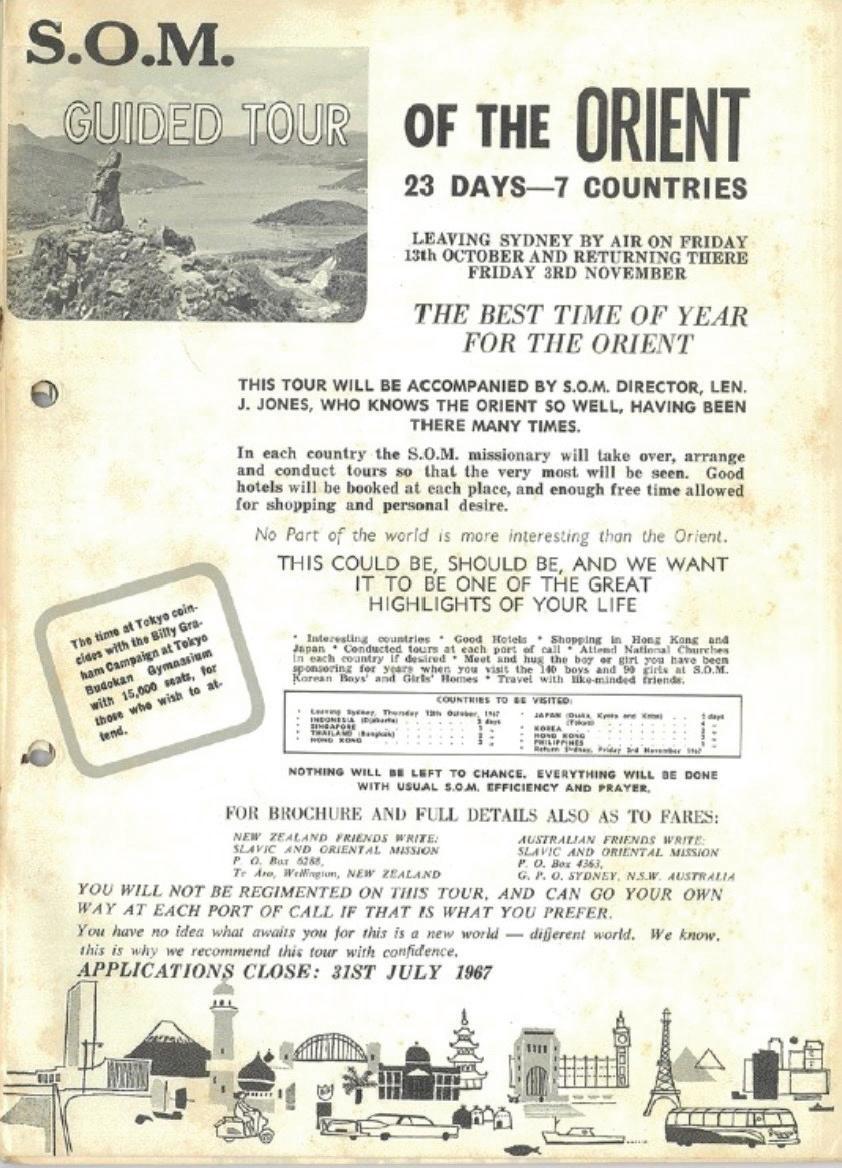


Japan, Korea and the USSR. SOM was also af filiated with a work in Indonesia, which had 20 national workers, and they were supporting a Korean orphanage through a partnership with World Vision.

Because records are a little sparse around this period, it is difficult to give exact dates, but the late 1950s into the early 1960s is the time when SOM began to deploy its first missionar ies and open its first mission fields. In an Evi dence Magazine in 1963, it records that SOM had the following fields - Japan, Korea, Hong Kong, Thailand and Indonesia.
As the fields began to develop, the name of the ministry was changed from the Slavic and Oriental Mission to ‘World Outreach’ in June 1967 to better reflect its reach into the Asia/ Pacific region - Philippines, Fiji, New Guinea, Thailand, and Australia – among the indige nous.
In January of the following year, 1968, the
South African field was birthed, then India in October the same year. In 1971, a Christian Literature Distribution Centre was established in Saigon, Vietnam. In August 1972, Rhodesia (now called Zimbabwe) and Zambia opened, then Kenya in October.
Len Jones died on 14th October, 1974, after a battle with prostate cancer. Len had authored five books – Confess it, Bloodied but Un bowed, Crucifixion with Christ, Sleuth Hound of Heaven, and Ignorance is not Bliss. He stud ied ‘geography’ and became a ‘Fellow of the Royal Geographical Society’. In recognition of his outstanding work and service, Len received an honorary Doctor of Divinity degree from the University of Texas. He is recognised as a missionary-statesman, a man full of faith and vision, and dedicated to the cause of missions.
From this point, World Outreach has contin ued a trajectory of growth and fruitfulness to the present day.
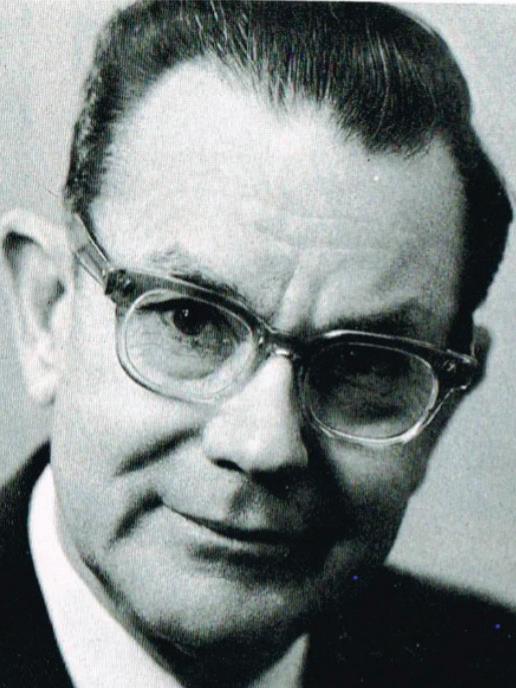 Front cover of The Evidence in 1967 featuring Len Jones
Len Jones, Founder of World Outreach
Front cover of The Evidence in 1967 featuring Len Jones
Len Jones, Founder of World Outreach

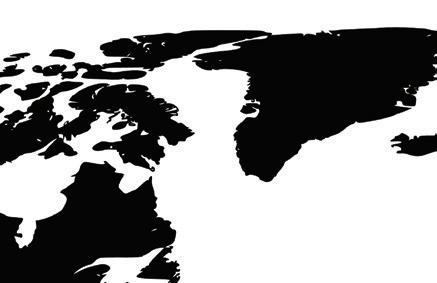
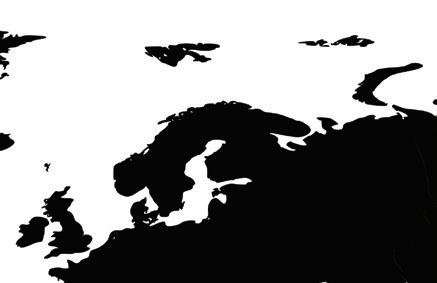










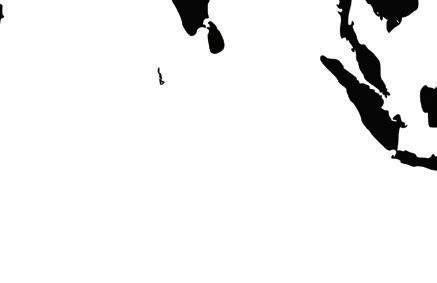




















The Nations Magazine was first published in 1938 under the name of The Evidence. In 1995, the name was changed to the New Evidence. Then in 2004 it was changed again to the Nations Magazine. Today, it is not only in printed form but comes digitally. There are three edi tions created a year, which are distributed to thousands of people across the world through the post or electronically.




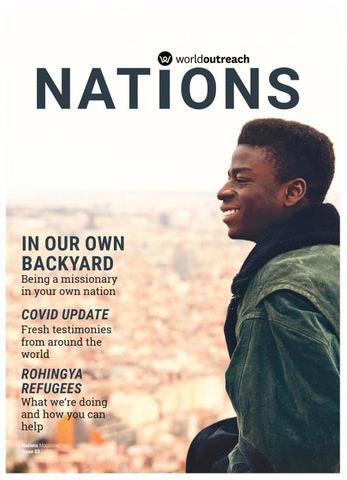
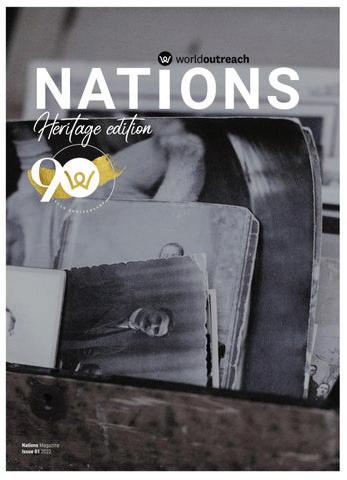
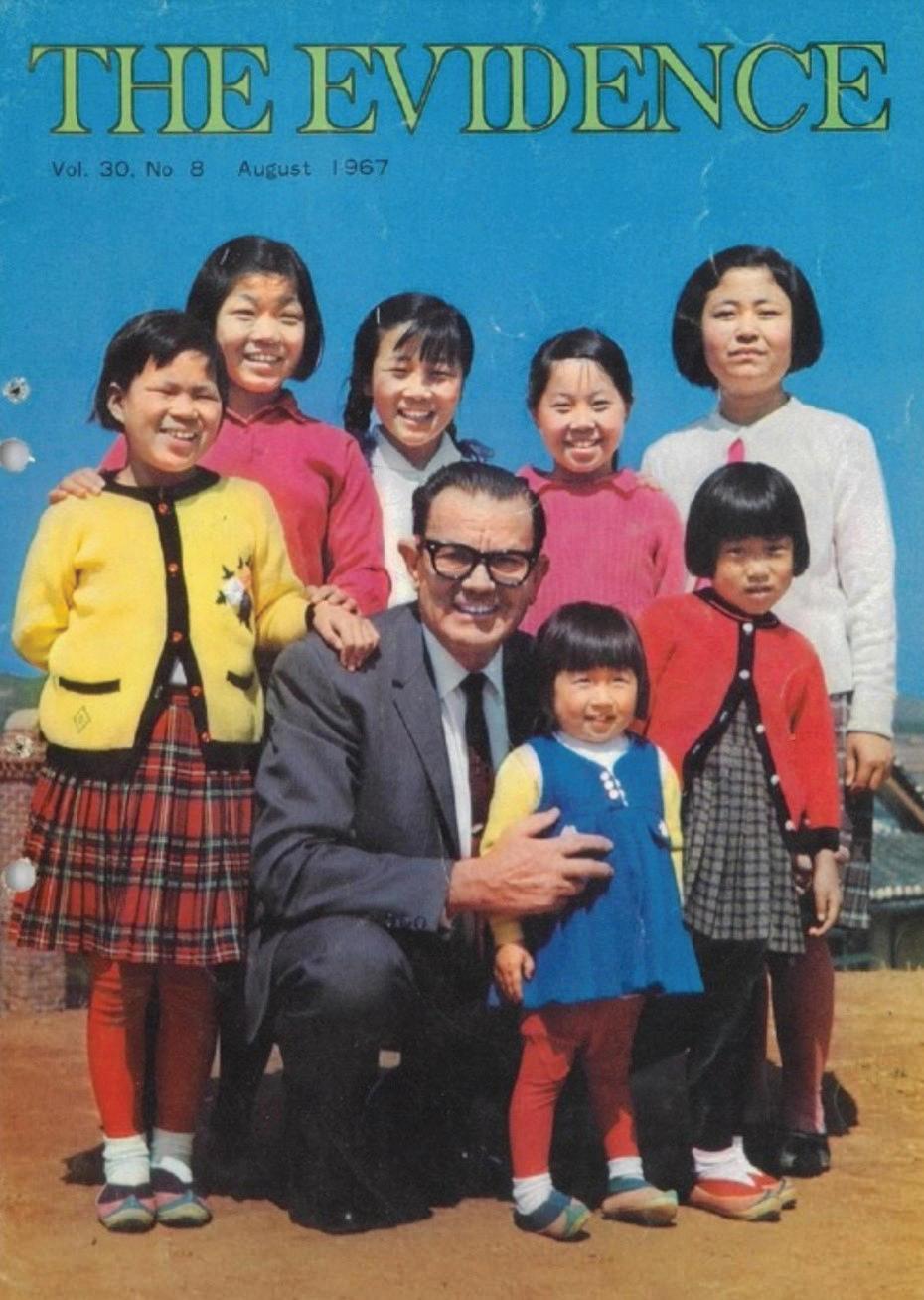






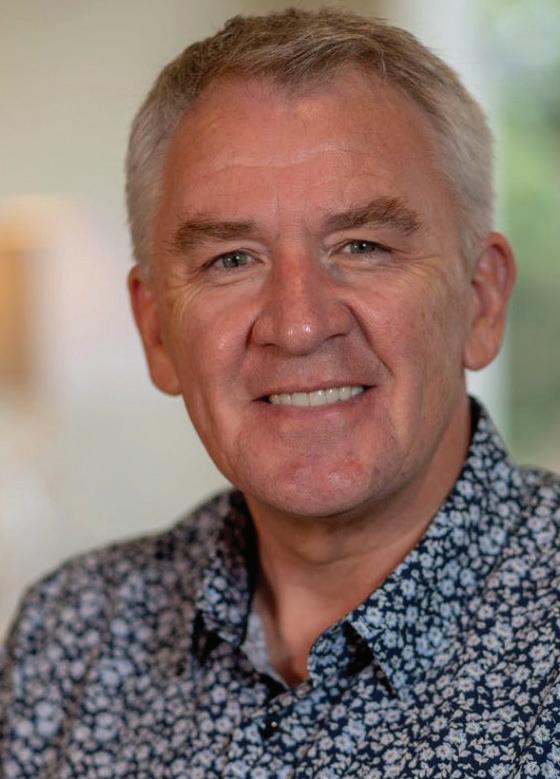

Congratulations to World Outreach on its 90th anniversary. My personal connection goes back a long way to when Len Jones was director and Chas Bilby was New Zealand direc tor. This is the late 1950s and early 60s. I still recall Len Jones visiting our church, showing slides and presenting the challenge of the missionary call.
In addition, Dal and Dorothy Walker (WOs first missionaries in Indonesia), became my parentsin-law when I married their daughter, Valmae, in 1965. Valmae and I left for the mission field in 1966, spending one year in the Philippines and, following that, 7 years in Indonesia. It was there that we formally linked up with World Outreach (WO) as we ministered in Indonesia through radio, literature, evangelistic crusades and a Bible correspondence course.
In the mid-1970s, I was pastor of a church in Wellington, New Zealand (NZ), when the call came from Chas Bilby (then International Director of WO), asking me to consider becoming Interna tional Director in his place. I agreed and served 8 years in that capacity, first based out of Wel lington, NZ, then for 3 years out of Dallas, USA.
During my tenure, among other duties, we initiated a ministry in Egypt through pastor’s semi nars and leadership training. I believe this was the first time that WO opened a ministry in the Middle East.
In 1983 I resigned to pursue a political run for the NZ Parliament and passed the baton to Bill Molenkamp, a long-time ministry associate and WO missionary.
World Outreach continued to grow over the years and now has reached its 90th anniversa ry. Our prayer is that it will continue to fulfil its mission worldwide, maintain its purpose of reaching all people with the gospel, and equipping pastors and other leaders as they grow in the Lord.
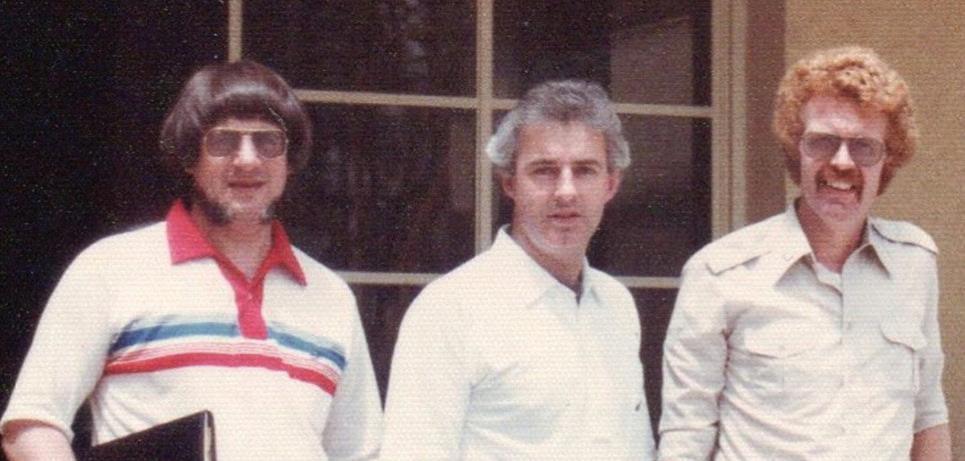
First of all, my wife, Fanny, and I want to congratulate the leadership and all members of the World Outreach family on its 90th Anniversary!
Ninety years of total commitment to the cause of Christ and his Kingdom is something to cele brate and give thanks for! Thanks be to God for his faithfulness, and also, of course, a big ‘thank you’ to the many faithful missionaries and national workers in many countries of the world. And not forgetting, the thousands of faithful supporters from churches all over the world. God and his people have been faithful. For that we give thanks!
I first contacted World Outreach at a very decisive and formative year in my life, in the late 1950s when studying in England. World Outreach was at that time known as the ‘Slavic and Oriental Mission.’ After several talks in the mission’s office in Dorchester, England, and corre spondence with David Greening, the British Director, and with Len Jones from Wanganui, New

Zealand, I was accepted as a World Outreach missionary to Japan, working with Literature, Radio and Bible Correspondence Courses. I had the privilege for some years to meet, talk, and work with Len Jones in his dynamic leadership visits to Japan. What an inspirational man he was, al ways thinking big and visionary, but, at the same time, humble enough to accept a young man’s advice on doing things differently in Japan. I grew under Len Jones in capacity and in daring faith.
I also vividly remember the period that Chas Bilby directed World Outreach (1974-75) – what a sweet man he was, at least to me! In that period, I spent weeks on and off in Japan and Hong Kong, managing the Mission’s publications. It was from Chas that Donald Crosbie took over the leadership of World Outreach (1975-83).
With Donald’s invitation to accompany him on travels in Egypt, it became possible to give sub stance and form to what I had tried to challenge the Mission for some time – to engage the Muslim-world. Out of that grew successful and effective ministries, first with the colourful, Magdy Bassaly, and later with the solid, Nathan Bassaly.
I accepted the Directorship of World Outreach from Donald and the International Board in 1983. Above all, I felt the privilege to work and fellowship closely with the many dedicated mis sionaries in the various fields. Wonderful people who all have affected and enlarged my life and work.
The most closely that I worked with any of the previous Directors was with John & Mary Elliott. John and Mary came to live in Hong Kong, rather near us, where we already lived for a number of years. At that point in time, I again challenged the Mission to another emphasis - ‘reaching unreached peoples’.
I immensely enjoyed the ‘Mission Seminars’ John and I did together in many churches in New Zealand and Singapore. When the appropriate time came (1995), it was with a sense of confi dence that I insisted, with some who felt otherwise, that John Elliott should be the one to step into my shoes as the next International Director. Together with Mary, he did a wonderful job leading World Outreach into a new dimension and new era.
Looking at the future, leaving 90-years, and reaching out for World Outreach’s 100-year anni versary – I do so with great confidence. First of all, confidence in God, but also confidence in the next generation where Bruce Hills has taken up the torch of leadership.
Pictured: Len Jones (left) visiting our first church in Japan with a group of New Zealand visitors in the 1970s.
On Friday 24th April, 2020, Bill Molenkamp, was bestowed with a Knighthood by the King of the Neth erlands. The Mayor of Haarlem – the city in which Bill and Fanny live – rang them and conveyed the following message: ‘It has pleased His Majesty, the King of the Netherlands, to bestow on Rev Bill Mo lenkamp, the Knighthood of the Order of the House of Orange, for his 60 years of International and National unselfish service to humanity.’ All of the World Outreach family are incredibly proud of this honour to ‘Sir William’.
Congratulations World Outreach (WO) on this 90th anniversary year! A fantastic achievement and wonderful milestone for all to celebrate!
When Mary & I first joined back in 1985 we were impressed with many amazing WO person nel we had met around that time. They were wholeheartedly sold out to taking the Good News globally, far and wide – whatever the cost!

They had chosen to serve with WO, a mission organisation that recognised God’s call on peo ple’s lives. WO would in turn partner with such people, i.e. become a stake holder in their calling, lending its infrastructure to assist missionaries in achieving the ministry vision the Lord had put in their hearts. This is one of the many strengths we have loved about WO. In its 90-year histo ry, this ethos has not changed.
Some previous International Directors spent an average 6-9 months a year travelling! Much of their time was spent visiting WO personnel on the different mission fields, and taking every opportunity to promote the work of the Mission and it’s personnel along the way.
By the late-1990s, WO was expanding its ministries on different continents. At the same time, it was obvious that the organisation needed to strengthen its infrastructure if its missionaries were to be given the necessary on-field support, upskilling and oversight to succeed.
By the early 2000s, WO began a ‘journey of change!’ Every aspect of the organisation was up for review, starting with the question - why does WO exist? A think-tank of around 30 WO people from different nations met together in Cape Town, South Africa, along with a change agent, who led us in a 4-day exercise on the topic. The end outcome that everyone unanimous ly endorsed was - WO existed to evangelise and disciple unreached people groups (UPG), equip ping them to disciple their own and other peoples.
Out of this very significant WO event, the following year the Mission’s values, distinctives, vision and ministry strategies were also re-visited so that they all reflect the UPG Mission Statement.
Vision WO2010 soon followed! This became a timeline goal whereby, via regional summits and global gatherings, all new personnel would all become aligned to the UPG vision. Back in 2003, a goal was set to see WO ministries on different continents engage with at least 50 UPGs by 2010. By that time different WO teams were engaged with 85 UPGs. And the UPG momentum continues to this very day! Praise the Lord!
ElliottJoseph H. Berry met Dr Len Jones for the first time in 1968 and joined World Outreach as its first South African representative. Formerly known as the Slavic and Oriental Mission, the name was changed to World Outreach when several countries were added such as Zambia, Zimbabwe, Malawi, and Kenya.
A house was bought in Alberton which was used as a dwelling place and an office was attached to it. It became the home and field office for World Outreach South Africa (SA). As the work grew, the office of World Outreach SA had to move to Halfway House where a bigger place was bought.

In 1969 David and Doreen joined World Outreach. In 1971, a big tent and truck were purchased (pictured) to be used for evangelism. Twenty-one churches were planted in Swaziland, as well twelve churches in South Africa. We also went to evangelise in other neighbouring countries, such as Botswana and Zimbabwe.
In 1981, the World Outreach Bible School (WOBS) was started. Over four thousand Pastors have been trained in the college to date and many of them are actively pastoring large congregations all around South Africa. Jeremiah Malaka later joined us in Evangelism. On 20th November, 2021, the WOBS celebrated 40 years of existence.
We are forever grateful to God for what he has done and continues to do. At present, we have ten lecturers teaching at the Bible School. These lecturers are unpaid volunteers who have returned to help with gratitude for what the Lord has done for them. We give all glory to God for what has been accomplished through World Outreach in Africa.
Today, WO’s presence on the African continent includes the countries of South Africa (SA), Botswana, Zambia, Swaziland, Mozambique, Kenya, Ethiopia, Ivory Coast, Burkina Faso and Egypt. South African missionaries now serve in Southeast Asia, Mozambique, Botswana, and Macedonia, as well as in migrant outreach programmes within SA.





The story of World Outreach (WO) in Egypt started in 1983, when Bill Molenkamp came to establish ministry in Egypt. He met with Pastor Menis Abdelnour, the pastor of the largest evangelical church in Egypt and teacher at the Evangelical College of Theology. Pastor Bill asked him to nominate someone to start this ministry in Egypt.

After prayers and thinking, Pastor Menis nominated a young man from the College of Theology graduates – Magdy Bassaly. Magdy met with Bill Molenkamp and agreed to begin the ministry (pictured below).
In 1988, Dr. Nathan Latif Bassaly, the older brother of Magdy Bassaly, joined the ministry after spending one year in New Zealand studying and training for ministry. After that, he returned to Egypt and left his job as a veterinarian and became a full-time minister for World Outreach in Egypt.
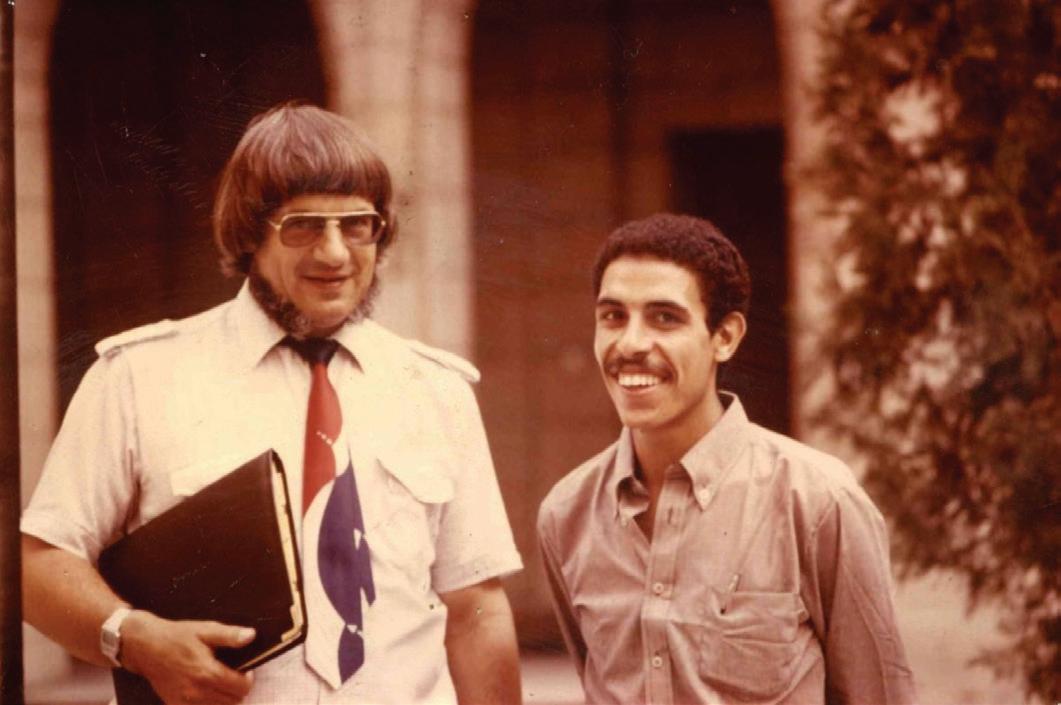
In 1992, Dr. Nathan became responsible for the World Outreach ministry in Egypt and the ministry extended to other fields.
Pictured above: Nathan Bassaly being prayed over

The ministry of World Outreach in Egypt start ed with sending Bible lessons by mail to pas tors and church leaders (pictured below). Bib lical topics were chosen, divided into lessons, and sent to pastors and church leaders for use in small groups, bible studies and churches. This ministry has been very successful and the number of people on our mailing list is over 3,000

Ken Legg, Glenn Hatcher, Stephen Parker, Peter Van W, David Dishroon, Paul Newberry, Joel Holm, Tak Bhana and Bruce Hills.
This teaching magazine started in 1996 and continues today (pictured below). It is consid ered one of the most powerful Arabic teaching magazines in Egypt and the Arab countries.

Now, many children have been taught the word of God through this curriculum. Also, we have trained hundreds of Sunday School teachers on how to use this curriculum.
Every year, two conferences are held. The number of attendees exceeds 200 pastors and church leaders in each conference. Foreign pastors were invited to teach in these sem inars, which have been such a blessing and encouragement to the church leaders in Egypt.

The conferences extended to include inviting Jewish believers and Arabs from Israel. It was amazing that Arabs and Jews came together in worship, prayer and hearing the word of God in such unity and harmony. We also went to Israel, especially to Nazareth, where we held training seminars for pastors and church lead ers.
God used many people to present teachings in those conferences, such as: Bill Molenkamp, John Elliott, John Pasterkamp, Peter Morrow,
The World Outreach ministry continued to offer spiritual services in many fields, but after what happened in Egypt in 2011, we found that we needed to do more to help the com munity we live in after the spread of poverty, financial needs and unemployment.
Here is a list of the things we do through our ministry in Egypt.
Many men, women and children, Muslim and Christians, have received training. These courses helped some of the trainees to find jobs. Others started their own projects. So, this helped many families to earn money, meet their essential needs and increase their in come.
We also run a Bible school. Every year about 15 young men come to learn in the Bible school to become full-time pastors (pictured below). Many of them have graduated and became pastors in many churches.

After the spread of the corona virus, many families lost their jobs. Poverty increased in our country. So, we try to support some poor families with finances and materials like food, clothes and blankets (pictured below).

The training centre was founded in 2015. It aims to train people to gain skills which may help them in finding jobs or beginning their own businesses. We offer computer courses, English language courses, hairdressing courses, art courses and music courses (see pictures to below).

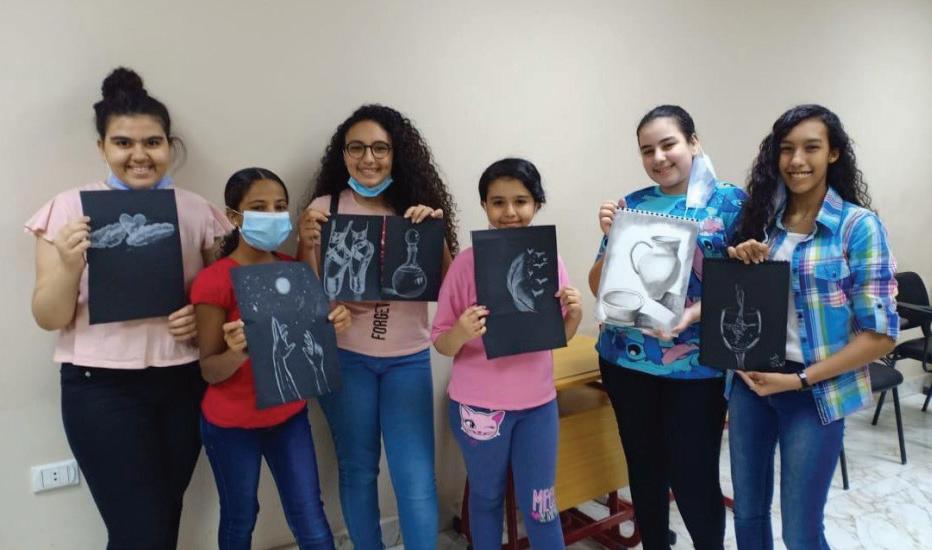
After the Arab spring that took place in many Arab countries, and the war in Syria, great numbers of refugees came to Egypt to escape the war. They live in a city near Cairo. They have great needs since they left everything behind in Syria and ran for their lives. Many of them are ill or have injuries that happened while escaping. So, it’s hard for them to find a job. So, we support some families and follow up with them about their situation.
In 2017, my wife, Sawsan (pictured on next page to the left), joined the ministry after leav ing her job as a pharmacist. She serves with dedication in the different ministry fields.
Many church leaders from different denomi nations contacted us, asking about curriculum for children’s ministry that covers all the Bible. There was no such curriculum in Arabic at the time.
So, we issued a curriculum which covers ages from 4 - 14 years old. It includes 20 books with visual aids (pictured below). This curric ulum is considered one of the most effective Sunday school curriculums in Arabic. Many Evangelical, Coptic and Catholic churches use this curriculum and it is also used in many Arab countries.


and Lebanon. He gave us the opportunity to translate his books into Arabic. These books are so useful and helpful, especially on the topic of leadership.
Now, many children have been taught the word of God through this curriculum. Also, we have trained hundreds of Sunday School teachers on how to use this curriculum.
Since Pastor Bruce Hills (pictured with Nathan right) became the International Director of World Outreach, he always encourages us. He has visited Egypt many times. He preached in many conferences for pastors, church leaders and many training seminars in Egypt, Jordan
This is the journey of World Outreach in Egypt since 1983.



a partner in a business house and, once es tablished, I would bring my family across the pond to live as a family. It was a challenge to give up the American dream, but the decision to forego this opportunity was made easier by my wife’s hesitancy to change and transplant cultures. Our children were still very young. It took me the whole of 1979 to prepare to return, not knowing what I would or could do. All I had was a very clear instruction from the still small voice that I start working for the Lord in church planting, but not for a salary or in a paid job.
B
orn into a family whose whole life re volved around church, it is difficult for me to remember when I had not known or heard about church. I was born in a hospital next to a church building, then brought home to a church building. I knew more of churches and buildings than my own father, who was absent when I was born, as he was posted in the Bangladeshi city of Chittagong, prior to the division of India. His company driver took my mom to hospital and hence laid claim of fa therhood to me for as long as I can remember. As a child I played in the church compound and my family’s idea of fun was attending church or church meetings.
“Church planting” is not a term found in Holy Scripture but coined by a missiologist for want of a better term. The roots of the term “church planting” were found in the 19th century, but it is a term that dominated the missiological world of the 20th, and now spans into the 21st. I became aware of this term as an infant when I would only see my mother when she was home and not involved in some church work at any given point in time. It became a term I did not want to hear and abhorred in my growing-up years, though I was not free of it, as I had to be the driver for my mom, un cles, and brothers, who were all involved in it in one way or the other. For my brothers, they were planting churches even when they were studying at university.
To make a long story short, it was in the year 1978, while living in the United States (US), a still small voice inside me suggested I return home to India. I had been offered and con sidered settling down in the US to work as

I had not made many friends in the Christen dom of the US at that time who could poten tially support us. Consequently, I was unsure how we were going to survive back in India, so I had to depend on what I had in my hands. It was to be the start of what I would later know as a life of faith and its outworking.
Once back in India, I started getting involved in the traditional way of establishing churches, but with an emphasis on reaching the regions beyond where historical denominations al ready had a presence. It was a long, arduous, hard road, though not impossible. The chal lenge was to find the right person to lead a fledgling church. Then, when you found one, the need arose for the appropriate resources to fund them.
Thus, my journey began. I joined a church or ganisation and started the adventure. Between 1980 and 2000 we established hundreds if not thousands of small local congregations. However, the attrition rate was also very high. This was due to many reasons though chiefly it was the economy of these little congregations

that left them vulnerable. It is a dilemma that baffles those involved in establishing congre gations in the modern world, a world where ministering comes with the expectation of a financial package being provided. It is much easier to say, “live by faith”, but so difficult in its outworking. There are some who do suc ceed, but many do not. I became unsatisfied with the finished product of the so-called church planting.
Meanwhile, by 1983, I got to know David Wal lis of World Outreach (WO), who, at the time, was living in South India. He was a teacher facilitating leadership development for most of the Pentecostal leaders of South India. In my meeting with him, he expressed the desire to have some inroad into North India and other places. He was my first contact with World Outreach, and through him John Elliott (former International Director of WO) came into the picture. David Wallis was John Elliott’s leader while they were in the Philippines, and they were good teammates. John had moved to Hong Kong and came to India for a seminar in my city. When he visited with a few others, the start of our association with World Out reach began.
World Outreach, which was never a funding agency, was a good facilitator of relationships. In a journey of undeniable development, they cast a vision for local churches to reach the unreached. We started organising “Life in Christ” seminars and publishing the “Life in Christ” magazine, which was a great tool for leadership development. Together with David Wallis, we were the first to enter Nepal and Myanmar with leadership development semi nars before those countries fully opened.
I met Peter Smith (former Field Ministries Director of WO) for the first time in 1992 in Singapore and our friendship started and has stood the test of time. Thus, my journey with World Outreach began and, as they say, the rest is history.
It wasn’t until January 2006, while I was at tending the Strategic Coordinator’s course in Singapore, that I became convicted of the way things were being done. My conviction came
with the realisation that Jesus said, “Follow me and I will teach you.” While all that time I had been trying to teach others. It struck me that the church must go back “home” if it was to be established. I made the mistake of trying to get people to church when what I should be doing is taking the church to their houses. The church must come home! Jesus brought the church to Mary & Martha’s house, Paul took it to the house of the Philippian jailor; Jesus went to the centurion’s home; he went to Pe ter’s house; he even went to the upper room of a house for the last supper.
The father or mother of the house are the keys to their family and, if a church is to be established, it then must be in their hous es and not in the temples. What a paradigm shift! I didn’t instantly become an expert but, in my amateurishness, a light dawned, the sun rose, causing the Son to rise in my heart, and Eureka! For me personally, I saw the light! “Christ, the head of the home” is not a slogan or poster we put on our walls, but a reality we must put in our hearts. Thus, the next part of the journey began, and I started moving in that direction, where I can see every father as a pastor, every son an evangelist, and every mother and daughter as a teacher.
For me, it was a real divine strategy. He incar nates himself in every family that open their hearts, opening not to a theology but to a reality they can all be disciples. The secret was in finding the “man of peace” in either a house, a village or a community, but most important ly, the house. The very important paradigm of seeing the father/mother of a family as being the lead pastor moved the strategy from being exclusive to being inclusive.
This house church then becomes the place where the meal becomes a sacrament, the bathroom can become the baptismal. Seeing the sanctum sanctorum not as a place in a special building but in the heart of a house took the strategy back to the first centu ry, pre-Constantine and pre-Roman world. This was a big revelation and a revolutionary thought directly challenging the traditional institution. To some, it is sacrilege. To the insti tutionalist, an abhorrence. To position-seekers,
a threat. This model cannot be done where tradition has already been established, but it can be done in the regions beyond where no stigma is found, and future constituents are not tarnished.
Thus, the world where Jesus sends us becomes larger. Identifying and discovering that “man of peace” is so important. We’ve learned that you do not go in because a young son or daughter could be extracted from the family; instead, we must have the patience of waiting for the family to be opened and the man of peace being the door opener. Thus, new fields opened in different places across India where the traditional churches have no presence and where families do not feel threatened by a new religion.
Learning from the incarnation of Jesus, we begin to understand that we do not go to change their culture, but to redeem it. How they pray is not wrong, but to whom they pray is very im portant. When, in their own family, they can see that the One to whom they pray brings healing from hurts and deliverance from oppression is a great opener. Where they do not need a special person from outside their community but that they can go directly by themselves to the altar brings change.
Since this discovery, thousands of churches in homes have begun to emerge across India and other countries like Myanmar, Thailand, Cambodia and in many other places. It’s like wildflowers growing in the unknown valleys all around the world.
As a term, “church planting” is a misnomer. Jesus never commanded the church to be planted; he said he will build the church. He is the builder, the finisher. He is the mason and the carpen ter. All that he requires of us is to be obedient as workmen to build according to his design. It is not a one-size-fits all philosophy, nor one design for all churches. He wants us to respect the cultures we go to, not to change them, and allow the process of redemption to be outworked. May his commandments be obeyed, his steps followed, and his words embedded, so that his life will thrive in the nations.
Aside from Dr K’s work, there are many other church planting teams in Northeast India. Over recent years, in excess of 60,000 people have been baptised through their work. In addition, WO has a thriv ing team operating out of Mumbai and a couple of effective works working among vulnerable young ladies.

Sam & Carol Soukotta are some of World Outreach’s most respected and experienced missionaries. Indonesia is one of WOs largest and most fruitful fields. Carol, once a missionary kid herself, wrote the following history of how WO began in Indonesia and how it has developed over the decades.

My parents, Dal & Dorothy Walker, were New Zealand (NZ) missionaries to Indo nesia from 1949. My father, Dal, was a close friend of Len Jones (the founder of WO). I’m not exactly sure when, but my parents joined World Outreach sometime in the early/mid1960s and became its first missionaries to Indonesia.
Due to a communist uprising in 1964, my par ents, younger brothers, sister and I were evac uated to NZ for two years. When my parents returned to Indonesia, I went to Manila to set up the World Outreach Literature Centre.
Ambon, joined our evangelistic team. We fell in love and married in 1972. Sam was asked to teach in the Bible School also.

In 1974 my father was killed in a car acci dent. But my mother continued to lead the school for the next 9 years. She then decided to return to NZ and asked that we would take over. We did after seeking the Lord for direc tion.
From 1984, we led the 2-year Diploma Course until 1998 when it was decided to upgrade to a 4-year Degree in Theology. Over the previous 10-12 years we had sent out many students to plant churches, especially in the villages throughout the country. Today, there are hundreds of pastors and church planters across the Indonesian archipelago who were trained at the Tawangmangu Bible School.
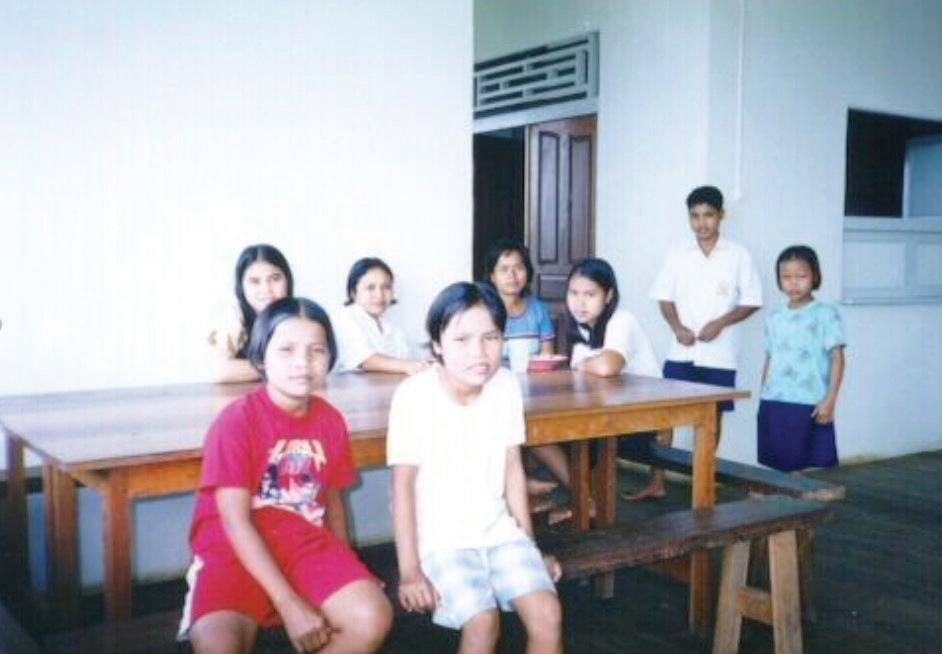
Around this same time (1998), while Sam was visiting our church planters in West Ka limantan, he had a vision. In his vision, Sam saw many buildings, cultivated grounds and a fishpond with plants on the water! This puz zled him. When he returned to Tawangmangu, he enquired of the Lord about the vision. God answered with one word – “BUILD”. We both didn’t know what to build, except for adding more buildings for the Bible college! When Sam told me that God wanted us to build, I immediately thought of Noah. He was told to build, and he obeyed.
They began the Tawangmangu Bible School in 1968. Tawangmangu is on the slopes of Mt Lawu in Central Java. I joined my parents again in 1969 and helped rearrange the office staff in administration, plus head up an evan gelistic team. In 1971, Sam, who was a grad uate of another Bible school on the island of
As he got the vision in West Kalimantan, he asked a church planter there to look for land that was for sale. Once he had identified a possible plot of land, Sam returned to West Kalimantan to look it over and enquire about the cost. He felt peace in his heart, especially after seeing a spring on the land. Sam still did not know what he was to build. Sam enquired about the price and also asked the owner how many children he had! The owner answered that he had 8 kids. Sam then asked if they were all Christians (as many of the Dayaks of Kalimantan had a Catholic background but mixed it with their ancestral worship). He answered, “No. Four were Christians/Catholics and four were Muslim.” The owner then said, “I am a poor man, so whoever could pay for
my children’s education, it was up to them to follow the religion!” A light came on! Immedi ately, Sam knew we were to build a Christian boarding school. That’s how the Mt Hope Christian Training Centre started. To date, the average number of children boarding is 150 with an additional 300 or so attending daily classes from kindergarten to Year 9. It’s our plan to build the High School (Years 10-12) but, as of yet, we don’t have sufficient funds.
In 2015 we knew something had to happen with the Tawangmangu campus, as registra tions had decreased, with so many Christian organisations starting up their own Bible col leges. We prayed for God’s leading. One day we had a visit from a previous principal of the Tawangmangu Bible College who said the Col lege was ready to become a university. With out thinking, we both answered together, “That’s it”. We just knew that’s what had to happen. It must have been the direction of the Holy Spirit, as we had no idea how to build a university! Neither Sam nor I have university degrees!
There had been prophecies that we would expand, and property would be added. Sam brought this idea before the staff and asked if they were in agreement. They were 100% with us. A few days later, Sam called a friend, who was a university teacher and had years of ex perience, and mentioned our plan. Amazingly, at the exact time, the university teacher was in a meeting with members of the Education Department discussing the start-up of new universities in Indonesia! The government had closed a number of universities that did not meet the government’s requirements. We got the go-ahead, and our lecturer friend arranged the permit.
The first foundation stone was laid at the 50th anniversary reunion of the Bible School in 2018. We had very little funds to begin, but begin we did. An architect from Kuching, Malaysia, and his friends, who had helped at Mt Hope, drew up the diagram for a 3-storey building for classrooms, teacher’s rooms, li brary, etc. We had enough rooms for boarding on our grounds as the Bible school numbers had declined. After a few months, a couple
from Solo, our nearest city, whom we did not know visited us. They asked about the Bible College and after a while we explained that we would be expanding to become a univer sity. We told them that our faith was being stretched but knew God would supply.
A few months later, the couple called and said they would like to transfer funds for the university. It was a huge amount and enabled us to get the 3-storey frame, roof and the ground floor completed. With the 1st floor completed, we could now begin the first in take of students. So, in 2020, the start was made on the Mt Hope Christian Boarding University. There was another miracle when the Education Department agreed to pay for the tuition and board of all the new intakesome 50+ students. And they would not only cover the costs for the first year, but until they completed their whole 4-year degree! In Octo ber 2021, we began the second year, and have had to use a large Dutch style home from the 1930-40s as a dorm to house 24 girls, as we had run out of dorm space.
By October (2022) we are hoping and pray ing for more land to build more dormitories, kitchen, dining room, etc. So, we continue to grow and will keep on trusting God. At pres ent, we have around 200 students. Those who register know it is a Christian university and so the biblical way of life is taught. Each morning the students attend the prayer meeting and on Sunday they join in with the bible students and College staff to worship God and hear the preaching of God’s Word.
Sam & Carol Soukotta MT HOPE FOUNDATIONTawangmangu College - www.stt-tawangmangu.ac.id
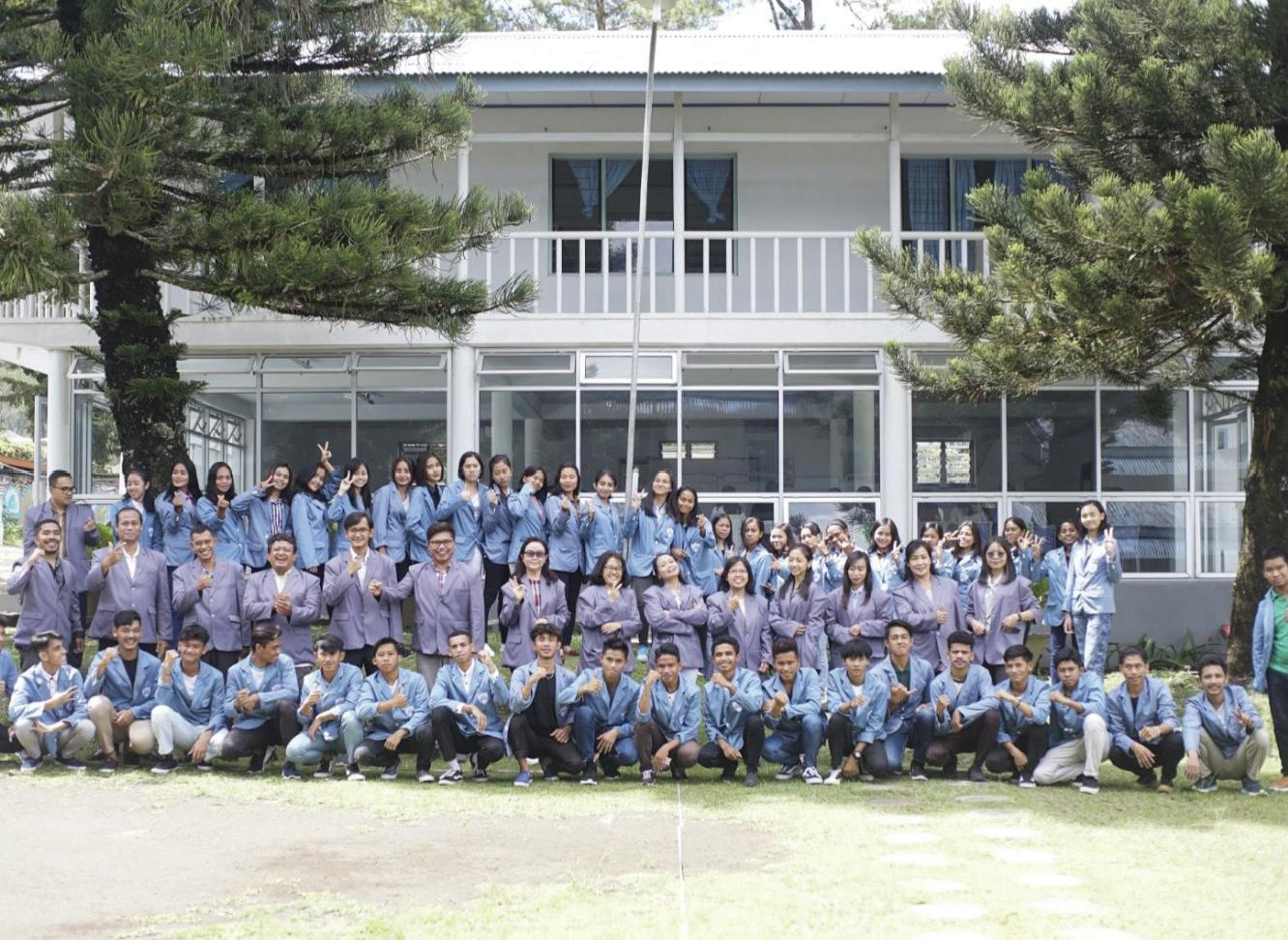
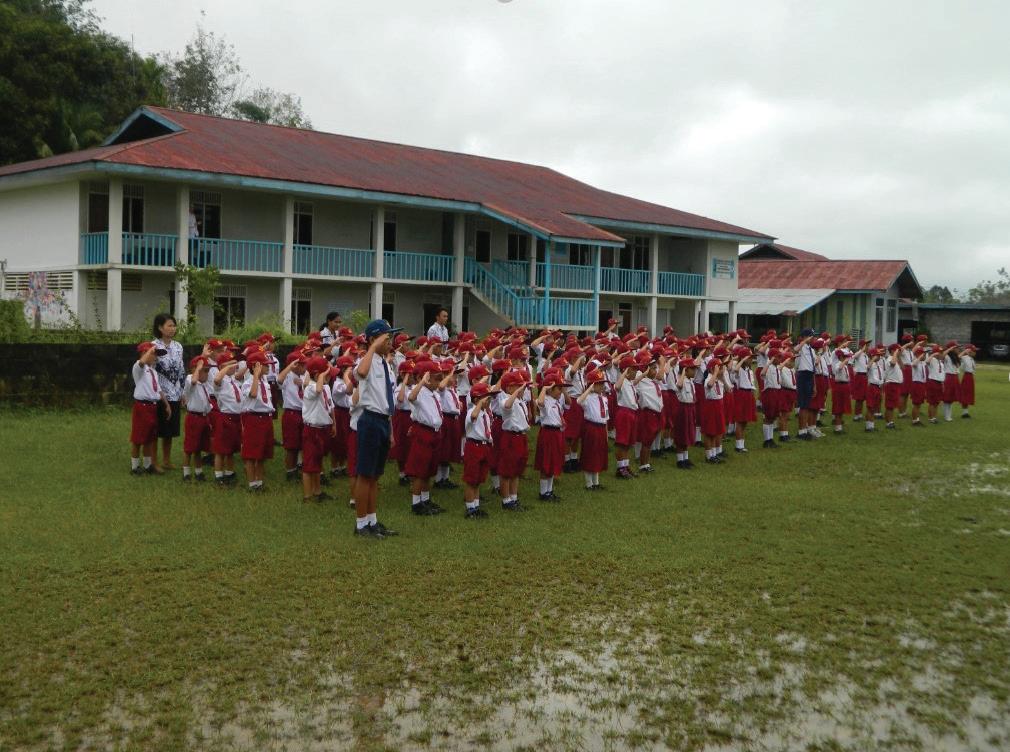

Children - www.mount-hope.org
University - www.mounthopefoundation.org
Aside from Sam and Carol’s ministry, WO has many other works in Indonesia such as the Alpha Mis sion Team working among the ‘Sakura’, the New Hope Children’s Home in Sanggau, church planting teams in Lombok and a new training hub to be established in Bali.
Mt Hope Primary Student Body 2021 Mt Hope Secondary Student Body today Tawamangu Bible College Student Body todayLorraine Dierck, became part of the World Outreach family and arrived in Thailand as a Mission Partner in 1978. This is her reflection of the beginning of World Outreach in Thailand. Though now retired from active field service in Thailand, Lorraine mentors, coaches and encourages her teams back in Thailand via the internet. The teams in Thailand continue to bear much fruit and frequently share very exciting stories about what the Lord is doing through them.
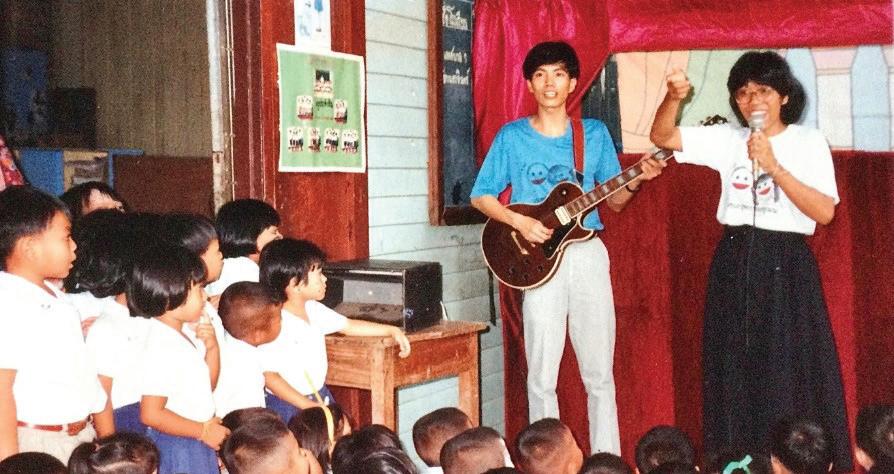

Paul and Bunty Collins from New Zealand were the first missionaries whose ministry became associated with World Outreach in Thailand. In 1962 Paul and Bunty proclaimed that their vision was to “go where no-one else had gone”. I remember listening to Paul as he preached and shared the spiritual need of 30-million Thai Buddhists. Paul laid down the challenge: “Come and join us in Thailand. I asked God to send me to the most difficult country to reach with the gospel! We need your help!” Stirring words, and I couldn’t for get Paul’s stories of Buddhist people coming to Christ in tent crusades and the literature ministry. As I began to pray for Paul and Bunty, God spoke to me about one day going to Thai land myself.
Meanwhile, I went on several YWAM teams including a two-year stint in Bangkok together with Valerie Bateup. We continued to work together as children’s ministers at the AOG church in Wellington (now called Lifepoint) which was pastored by Don Crosbie.

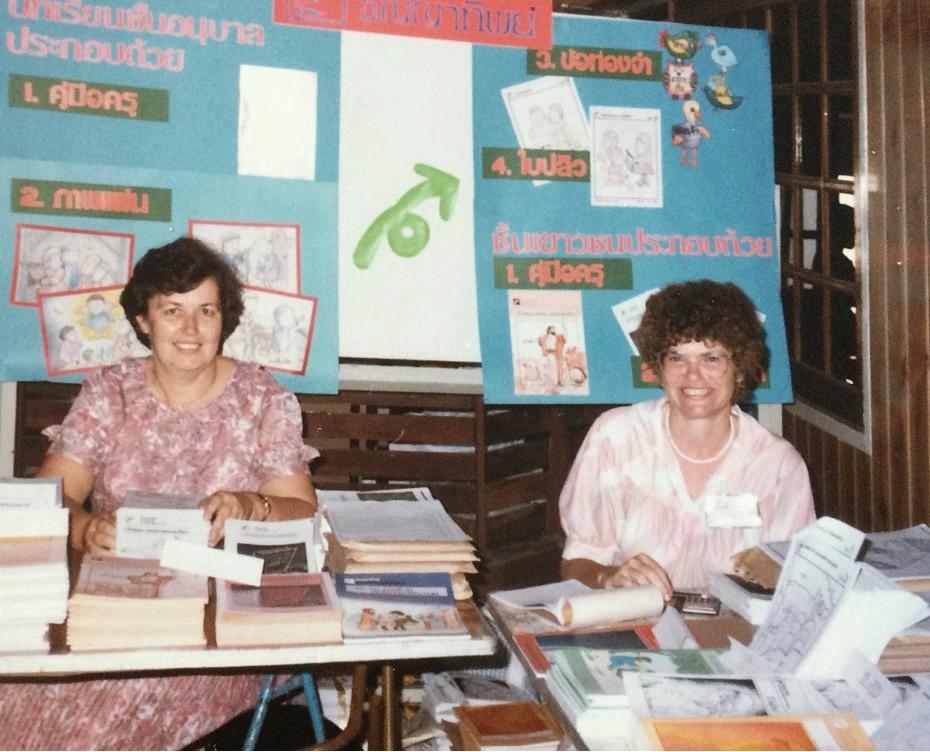
many others, to replace them.
I was very happy to be chosen, but just one problem – obtaining a missionary visa was seemingly impossible. Then one day Pastor Don brought two visitors to observe a chil dren’s programme that Valerie Bateup and I were running. Verner and Ulla Raassina were well-known Finnish missionaries to Thailand. Verner was in fact the first Pentecostal mis sionary to Thailand in 1947 and founded the Thai work of the Finnish Foreign Mission, now known as FIDA. Their complimentary observa tions that: “This programme is wonderful! We need this in Thailand!” emboldened me to ask cheekily “Well, if I went to Thailand, would you give me a missionary visa?” “Yes, we certainly would!” And so began a partnership with FIDA who have blessed many World Outreach mis sionaries with not only visas but also with rich fellowship and relationship.
When Don Crosbie, who was then the Inter national Director of World Outreach, heard that I was off to Thailand, he invited me to join World Outreach. It felt like a good fit, and I have been immensely blessed to be part of the World Outreach family.
In 1978 while at a children’s training event run by Scripture Union, I heard the sad news that there had been a horrific accident in Thailand resulting in the death of several missionaries. After hearing that news, God spoke to me through my daily Bible reading in John 12:24 where Jesus was speaking about the grain of wheat that falls into the earth and dies, “but if it dies, it produces many others and yields a rich harvest”. I felt that the work of the ones who had died in the car accident was finished, but that God was calling me, together with
I arrived in Thailand as a WO mission partner in 1978 and continued studying Thai while also teaching about children’s ministry at the Finnish Bible College. I was preparing to vis it Thai schools with a one-hour programme introducing the students to the good news of salvation through Jesus Christ. One of my Bible School students, Srilum Nilsiri heard God calling her to join the children’s ministry. Srilum
became the first member of the Good News team from 1979 until her tragic death from cancer in 1988.
Valerie Bateup was keen to return to Thai land, and in 1979 she brought a team from Lifepoint (our home church in NZ). Srilum and I visited schools along Klong Rangsit in Thany aburi to ask if we could bring some overseas visitors to tell the story of the “true mean ing of Christmas”. Every school welcomed us enthusiastically. Valerie’s team was a great hit, and God called her to return to Thailand with World Outreach in 1980. Valerie brought excellent creative writing gifts and togeth er we established the ministry of the Good News Team in Bangkok. Now led by two of our World Outreach Mission Partners, Win and Kanchana, the Team continues to reach Thai children through school outreaches and follow up literature.
Several World Outreach Thai Mission Part ners began their ministries working with the Good News Team. John P. with his musical and technical prowess was an early team member. A young lady called Nok became a Christian after attending my English class at Pathumthani Church. After John and Nok were married they served with the Good News Team for many years before leaving to pastor Pathumthani church. John and Nok are cur rently spear-heading a DMM (Disciple-making Movement) and are also reaching thousands of Thais through their media ministry.
Prasert, who is the WO Thai Field Leader, joined the Good News Team after graduat ing from the Pentecostal Bible College. She worked with the Team for over 10 years be fore leaving to start the House of Hope minis try in a slum resettlement community of north Bangkok.
The World Outreach work in Thailand was strengthened as new missionaries began to ar rive, starting with John and Marie Anton from Australia who went to South Thailand with AOG World Missions in 1988. The Anton fam ily joined World Outreach in 1996 and shortly afterwards began reaching out to unreached people groups of a another major religion in
South Thailand where they lived and worked for over 30 years before returning to Australia in 2020.
Patricia Green from New Zealand was deeply concerned by the spiritual needs of Thai wom en who had been trafficked into the sex trade. In the early 1990s Patricia opened “Rahab”, in the form of a hairdressing salon in the red-light district of Bangkok to reach out to these wom en, and to provide alternative employment to those who decided to leave the bars.
Elisa from Uruguay joined World Outreach in 1998 and worked with tribal children in North Thailand, and then moved to North East Thai land where she was involved in church-plant ing, discipleship and prison ministry. Elisa was a great blessing for more than 20 years before returning to Uruguay for family reasons.
Gayle and Chaiyot also joined World Outreach in 1998 while they were teaching in Prachuab Kiri Khan. In 1999 they relocated to Chaiyot’s home town of Surathani with a vision for disci pleship and church-planting. Chaiyot became the Thailand director of the Kairos course, and eventually relocated to Chiang Mai where they had more opportunity to mobilse the Thai church for cross-cultural mission.
In February 2001 the Potter family moved to Thailand to serve on the leadership team at the Children’s Tribal Hostel in Mae Chaem. Shortly after, the Lord put on Malcolm and Sandy’s hearts to build Baan Faa Mai, a new hostel for tribal children who had no schools in their villages. It was a large step of faith as there were only funds for the foundations of the first building. After beginning construction, God supernaturally provided until completion, 3 years later. Apart from supervision of con struction, Malcolm and Sandy took teams of students to visit their home villages to share the gospel and start new churches in un reached tribal villages. In 2012 they also began a hostel for tribal university girls in Chiang Mai. Malcolm and Sandy have served World Out reach for many years as Field Leaders for ex patriate Mission Partners serving in Thailand.
Kevin and Jeh Sie Chan from Singapore were
invovled with ministering to the Karen refugees on the Thai-Myanmar border for many years, and eventually moved to Northeast Thailand in 2011 with a vision to launch small business es as church planting opportunities (Business as Mission). They started a language school and ran a board game cafe to reach out to university students. Kevin and Jeh Sie surprised their team members as well as locals with their ability to speak and read Thai fluently after just a few months in Thailand! Although they left in 2016 to move into leadership roles within World Out reach International, they left a powerful legacy behind them.
These are only a few of the people who served with World Outreach in Thailand during those early days. I also remember Nancy from Uruguay; Irene Ng-Lodge from Malaysia; Eliza, Delora, Joey and Raya from the Philippines, and David and Ruth who are now serving in Laos.
All of them worked faithfully and contributed to the harvest.
Since the day Paul Collins landed in Thailand, the number of Buddhists has doubled to 64 mil lion, and many districts still have no church. More labourers are needed! But they will be build ing on a good foundation. World Outreach Mission Partners have told the story of Jesus with passion and power in the North, South, Northeast and Central Thailand for more than 40 years. Many Thai pastors and Christian leaders are in full time ministry because of their relationship with World Outreach.
Being part of World Outreach has strengthend, equipped, empowered and encouraged us all as we have served together. May the Lord of the harvest be glorified in Thailand!

A parallel of World Outreach’s timeline mirrored by key moments in history.

Hitler and national German Workers’ Party come to power 1939
World War Two begins in Europe
World Outreach (as it is known today) was registered by Len Jones as the Russian and Eastern European Mission (REEM) in New Zealand
Len Jones represents REEM in Australia, NZ and (later) South Africa
WW2 ends in Europe
Atom bomb dropped on Hiroshima Japanese surrender. WW2 ends in the Pacific 1948
USSR expands through invasions.
Cold War begins Mahatma Ghandi assassinated
While WWII raged in Europe, Asia and the Pacific, Len Jones commanded the Australian Army’s YMCA force in the Middle East and the Pacific
From 1946-1948, Len Jones represents REEM in Australia & NZ, focusing on ministry to Slavic immigrants
After the War, Asia opens up for missions on an unprecedented scale
Korean War begins 1953
Coronation of Queen Elizabeth 2 Korean War ends
REEM changes it name to the Eastern Europe an Mission (EEM)
Len Jones travels extensively making new contacts for the Slavic and Oriental Mission (SOM)
World Outreach (under the name SOM) is birthed by Len Jones in Japan under the lead ership of Ki Endo (radio and literature ministry)
Len Jones gets involved in a large orphanage in post-war South Korea from 1957, which was run by Mr Noh
Yuri Gargarin (from USSR) becomes first man in space Berlin Wall constructed 1962
Nelson Mandella arrested Cuban Missile Crisis 1963
JFK assassinated 1965
Sir Winston Churchill dies 1966
Gandhi becomes Prime Minister of India China’s Cultural Revolution begins under Mao 1967
Six-day War World’s first heart transplant conducted in South Africa
Soviet tanks crush Czechoslovakia’s experiment with democracy 1969
Apollo 11’s Neil Armstrong becomes first man to walk on the Moon
SOM establishes its first fields in Japan, Korea, Hong Kong, Thai land, Indonesia, Philippines, Fiji, New Guinea and Thailand
The name ‘Slavic and Oriental Mission’ was changed to ‘World Outreach’ 1968 World Outreach was birthed in South Africa through Joseph Berry
India opens up as a new field World Outreach established in Indonesia when Dal & Dorothy Walker joined
First jumbo jet (Boeing 747) makes debut commercial flight
The Beatles announce they are disbanding 1972 Watergate scandal Invention of pocket calculators
New fields are opened in Viet nam, Zimbabwe, Zambia and Kenya
Roe v Wade case declares abortion a US Constitutional right Yom Kippur War Oil crisis in the Middle East sparks world oil shock 1974
The world’s population hits 4 billion 1975 Vietnam War ends 1977
Elvis Presley found dead 1978
Israel and Egypt sign Camp David accords
Len Jones died 14th October
New Zealander, Chas Bilby, becomes interim International Director for 12 months 1975
Don Crosbie, also from NZ, appointed as In ternational Director
International Office based in both Wellington, NZ, and Dallas, Texas, USA
World Outreach is birthed in Thailand through the work of Lorraine Dierck
World’s first personal computer launched by IBM
HRH Prince Charles marries Lady Diana AIDS-crisis begins 1982 Falklands War 1983
NASA launches the first Space Shuttle World’s first mobile phone launched 1984
Indira Gandhi assassinated 1985
Mikhail Gorbachev institutes ‘glasnost’ and ‘perestroika’ in USSR 1986 Chernobyl nuclear accident 1989
Tiananmen Square massacre Exxon Valdez oil spill Berlin Wall falls
World Outreach is birthed in Egypt through Magdy Bassaly
Missionary John Pasterkamp from the Netherlands joins WO after a long-term relationship and brings his work in Papua New Guinea into WO
World Outreach established in India through Dr Kitbok R
Bill Molenkamp from the Netherlands became ID after resignation of Don Crosbie in 1983
International Office relocated from Dallas to Hong Kong
Formal proposal for the World Wide Web East and West Germany are reunited after the collapse of the Soviet Union
The Internet becomes available for unrestricted commercial use
Operation ‘Desert Storm’ begins in Iraq Boris Yeltsin becomes Russia’s first elected President
Nelson Mandela is elected President of South Africa in the nation’s first multi-racial elections
Princess Diana and Prince Charles are divorced 1998 Google is founded 1999
Worldwide panic over the Y2K problem and the millennium bug
Bill and Fanny Molenkamp relocated from Hong Kong to the Netherlands
1992 first global gathering of WO personnel for the 60th anniversary of WO
John Elliott took over from Bill Molenkamp as International Director
International Office Shifts from Hong Kong to Singapore in
Formation of the WO ‘Mission Council’ (which later became the ‘International Lead ership Team’) comprised of experienced and seasoned on-field personnel to assist the International Director in the direction and development of the Mission
Major period of expansion in numbers of missionaries and fields
9/11 attack on New York and Washington
Launch of the ‘War on Terror’
40 million people now estimated to be infected with AIDs Facebook is launched as a social media network
Triennial gatherings of WO personnel held in both Asia and Africa
70th anniversary celebration held in both South Africa and Thailand
Major ministry focus ‘think-tank’ held in Cape Town which affirmed that WO existed to en gage with unreached people groups
2004
Massive tsunami sweeps across many nations, mainly SE ASia
You Tube is founded 2007
Collapse of Wall Street and Global recession iPhone launched
WO leadership met and established a 2005 – 2010 strategic UPG plan – the first of its kind
2010 iPad launched by Apple 2011 Osama Bin Laden killed Earthquake and tsunami in Japan 2012
Massive blackouts in India leaving 700 million without power 2013 Nelson Mandella dies 2014
MH370 goes missing MH17 shot down 2015
Paris Agreement on Climate Change ISIS expands brutal attacks 2016
Britain votes to leave the EU Donald Trump becomes President of the USA
2012
Global 80th anniversary of WO held in Chiang Mai, Thailand
2016
Transition of leadership from John Elliott to Bruce Hills (in 2017) 2018 85th anniversary in Chiang Mai, Thailand
Throughout 2020-21, the COVID-19 pandemic seriously disrupted normal face-to-face missions activities, requiring many field workers to adapt their ministries. An estimated 20% of WO field workers caught COVID-19, some seriously. Launch of Vision 2025 – a five-year strategic plan.
Vision 2025 (or V2025) is a 5-year strategic plan of where we want to be as a mission by the end of 2025.

By the end of 2025, we want to increase the number of UPGs we are engaged with to 300. Unreached People Groups (UPGs) are our primary distinctive and focus. This distinctive governs virtually everything that World Outreach does. Most activities, initiatives, ministries, services and structures support and work toward this end-goal of evangelising and discipling UPGs. All other goals are there to accomplish this main goal.
To reach the audacious goal of engaging with 300 UPGs, we have set a goal to double the number of our missionaries to 500.
To accomplish all this, we will need a lot more income, so we have set a goal to increase our annual income by $1,000,000.
All of this would be impossible without a prayer covering, so we have set a goal to increase our prayer base from (currently) 500 to 10,000 people. Just imagine thousands of people praying over a UPG, then one of our team going in to engage with them!



Will you partner with us in one of the greatest moments in modern day missions?
Middle East
Eastern Europe Asia South East Asia South Asia East Asia
Africa Western Africa North Africa Eastern Africa Southern Africa



